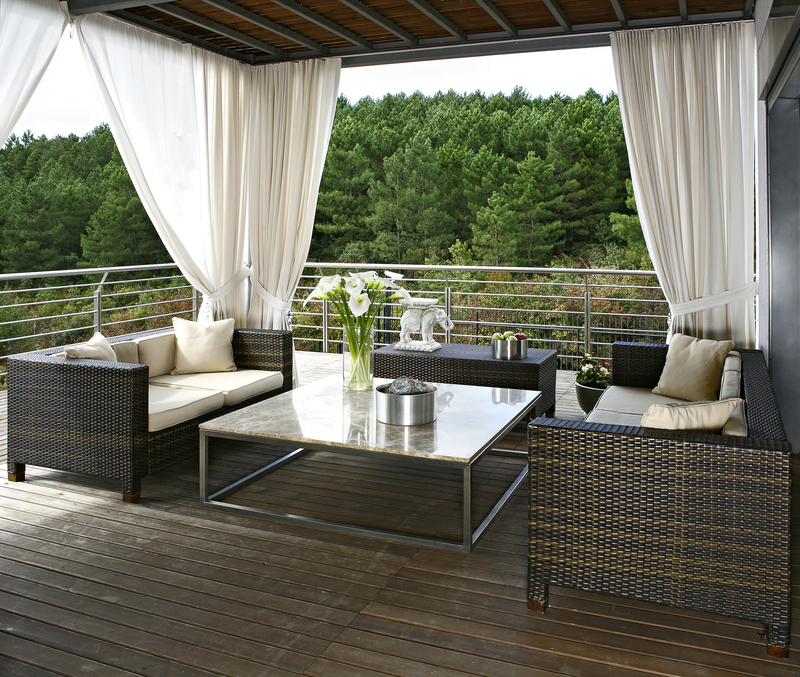Creating an Innovative and Safe Garden with Elements Kids Love
Posted on 20/08/2025
Creating an Innovative and Safe Garden with Elements Kids Love
Transforming your backyard into an innovative and safe garden for kids is both a rewarding and joyful experience. Gardens tuned to children's interests not only stimulate creativity but also instill a lifelong love for nature. In this comprehensive guide, we'll discuss how to design, build, and maintain a family-friendly garden featuring imaginative elements that children love while ensuring all safety measures are in place.

Why an Innovative and Safe Garden Matters for Kids
Kids thrive in environments that invite exploration and discovery. An exciting child-friendly garden provides countless physical, emotional, and educational benefits:
- Physical development: Outdoor play helps kids improve balance, coordination, and strength.
- Sensory enrichment: Nature exposes children to new sights, smells, textures, and sounds.
- Cognitive stimulation: Environments full of interesting plants and play features encourage problem-solving and creativity.
- Social interaction: Gardens are wonderful places for group play, sharing, and teamwork.
- Mental well-being: Green spaces help reduce stress and enhance mood in growing children.
Building a safe, innovative backyard garden with elements children adore can positively impact their growth and happiness in profound ways.
Key Principles for Designing a Child-Centric Garden
1. Prioritize Child Safety
Safety is always the top priority when crafting a fun and innovative garden for kids. Here are essential steps:
- Choose non-toxic plants: Avoid species like foxglove, oleander, or nightshade, which can be harmful if touched or ingested.
- Eco-friendly, soft surfaces: Use bark chips, rubber mulch, or grass to cushion falls and reduce injury risks.
- Secure fencing and gates: Installing fences with child-proof locks ensures peace of mind.
- Eliminate sharp edges: Opt for rounded planters and play equipment.
- Avoid standing water: Cover ponds, birdbaths, or water features to prevent drowning hazards.
2. Foster Creativity and Exploration
Kids love gardens that spark curiosity. Incorporate items that invite children to touch, interact, and imagine:
- Secret pathways: Winding trails made of stepping stones or wood chips add an air of mystery.
- Interactive garden beds: Raised, accessible beds encourage hands-on gardening.
- Colorful plantings: Use flowers and shrubs in bright, engaging hues to capture attention.
- Nooks and hideouts: Teepees, willow tunnels, or bean pole tents create magical spaces for make-believe.
- Natural building materials: Use logs, branches, and stones to stimulate the imagination.
3. Balance Play with Nature
Combining fun play areas with natural elements creates a harmonious space:
- Mix play equipment and native plants: Integrate playsets or slides into garden beds filled with local flora for a seamless, eco-friendly design.
- Layered landscaping: Use shrubs and tall grasses to create a multi-level environment for climbing, hiding, and exploring.
Best Innovative and Safe Garden Elements Kids Love
Let's explore the top features and design ideas proven to captivate children and keep them secure:
Edible Gardens
- Vegetable patches: Accessible raised beds let children dig, plant, and harvest carrots, lettuce, or beans.
- Berry bushes: Raspberries, blueberries, or strawberries make healthy snacks and sensory experiences.
- Herb corners: Mint, basil, or lemon balm fascinate with smell and taste.
Tip: Choose organic soils and avoid chemical fertilizers or pesticides for child-friendly edible gardens.
Imaginative Play Structures
- Treehouses and platforms: Elevated structures foster independence and adventure while enhancing spatial awareness.
- Play tunnels: Willow huts or fabric tubes invite crawling and secret games.
- Nature play kitchens: Mud kitchens with old pots and pans encourage sensory play.
- DIY forts: Use bamboo, branches, or recycled materials for customizable dens.
Interactive Water Features
- Hand-pump fountains: Let kids activate safe, low-pressure sprayers.
- Water tables: Sand-and-water tables provide hours of tactile experimentation.
- Mist sprayers: Add misting posts for fun, cooling play on hot days.
Always supervise toddlers around water, and ensure features are shallow and covered when not in use.
Musical and Sensory Corners
- Sound gardens: Hang chimes, xylophones, or drums for auditory stimulation.
- Sensory paths: Arrange walkways with different textures (river stones, wood, sand, and grass) to encourage barefoot exploration.
- Touch plants: Lamb's ear or ornamental grasses invite stroking and curiosity.
Wildlife Habitats
- Bug hotels: Create safe homes for pollinators and teach kids about ecology.
- Bird feeders and butterfly gardens: Attract colorful visitors and encourage observation.
- Pondless water features: Bubbling rocks or hidden reservoirs attract frogs and birds with no open water risk.
Art and Learning Spaces
- Outdoor chalkboards: Let imaginations run wild with washable art stations.
- Pebble mosaics: Encourage creativity as kids design pathways or garden markers.
- Story circles: Arrange logs or hay bales into a ring for reading time, music, or sharing tales under a shady tree.
Step-By-Step: Planning an Innovative Safe Garden for Children
Step 1: Get Kids Involved
Involving children in the planning and design process is key for a truly child-centered garden. Ask them:
- What activities do you love outside?
- Which colors or plants do you find exciting?
- Are you interested in growing food or having spaces to build or create?
Encourage children to draw their ideal garden layout, which can reveal features you might have overlooked.
Step 2: Site Assessment
- Check for hazards: Remove or relocate sharp tools, chemicals, or breakable garden decor.
- Assess sunlight and shelter: Ensure play and garden zones get the right mix of sun and shade throughout the day.
- Review access: Make paths wide enough for strollers or wheelchairs and ensure gates are secure but easy for adults to open.
Step 3: Sketch Your Garden Zones
- Divide space logically: Separate quiet zones (reading, wildlife watching) from active zones (sports, climbing) for safety and harmony.
- Leave running space: Create open grassy areas for sports or games.
- Connect areas: Use curving, accessible paths bordered by edible or sensory plants.
Step 4: Emphasize Safety at Every Turn
- Soft landings: Use mulch or grass under play equipment.
- Check heights: Keep climbing structures low for younger children and ensure higher platforms have sturdy railings.
- Constant visibility: Design layouts so adults can view children easily from common spaces like patios or kitchens.
Step 5: Choose Durable, Sustainable Materials
- Opt for untreated hardwood, natural stone, or recycled plastic for built features, minimizing maintenance and environmental impact.
- Prioritize water conservation: Install drip irrigation and mulch beds to retain moisture for plants and play surfaces.
Maintaining Your Kid-Friendly Innovative Garden
To keep your creative children's garden safe and inviting:
- Regular inspections: Check for hazards, broken parts, or loose surfaces weekly.
- Seasonal updates: Rotate toys or plantings to maintain freshness and interest.
- Encourage responsibility: Invite kids to help water, weed, and tidy their special areas.
- Welcome change: As children grow, their interests will evolve. Adapt the garden to suit new hobbies or skills.
Tips for Year-Round Engagement
- Winter fun: Add bird feeders, install fairy lights, or use snow for building forts and snowmen when the garden is dormant.
- Spring planting: Let kids start seeds indoors and transplant outside, building excitement for the growing season.
- Summer adventure: Create shade "tents," set up water play days, or host outdoor storytelling sessions.
- Autumn harvest: Celebrate by picking fruit and veggies together, or crafting with autumn leaves and seeds.

Cultivating a Legacy of Nature-Loving Kids
By developing a safe and creative children's garden with elements they love, you're planting seeds for lifelong sustainability, creativity, and happiness. Such gardens become cherished spaces for learning, laughter, and discovery, helping children build resilience and respect for the world around them.
Remember, the best innovative children's gardens grow with your family's needs. Embrace flexibility, curiosity, and a sense of adventure in your design, and enjoy countless outdoor memories together!
Resources for Further Inspiration
- Books: "Roots, Shoots, Buckets, and Boots" by Sharon Lovejoy
- Websites: National Wildlife Federation's Garden for Wildlife (nwf.org)
- Gardening clubs: Local botanical gardens often offer family workshops and hands-on learning opportunities.
Start your innovative and safe garden with elements kids love today, and watch your backyard transform into a haven of adventure and learning!



